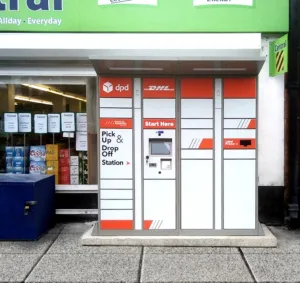By Spryker co-CEO Alexander Graf
Social commerce is already massive and Accenture has predicted that it will be worth $1.2 trillion by 2025, growing three times faster than traditional ecommerce. It also claimed that by 2025, social will comprise no less than 17% of all ecommerce sales.
When you consider other factors, such as TikTok launching its shopping facility in the UK and more consumers shopping on Facebook, it’s easy to think that social media could be transformed into one big shopping channel. The whole buying experience, from initial product discovery to check-out, will take place on social media, with the consumer never leaving the app.
But for me, this just doesn’t add up. Social commerce is a powerful force, but social media platforms aren’t the right place for it.
The development of social purchasing
Predictions of social commerce on social media miss the mark because they do not reflect the development of social purchasing that will actually occur. 15 years ago, it was perfectly conceivable that if someone posted about a product on Facebook, one of their friends would be influenced to buy that product based on that recommendation.
It’s conceivable but wasn’t actually happening in any great numbers. A few years later, when social media was more mature, users were now potentially at the centre of an online purchasing chain, either helping generate a buying impulse with a Facebook status update or supporting the brand by writing SEO-helpful product reviews.
This placed the user much more in the foreground. Social commerce was still about selling, but it was no longer the product that was at the heart of it. Providers were not within reach of transaction competition, but in competition for the attention of the user.
Social media or ecommerce?
At that time, potential consumers needed to be lured into the retailer’s online or offline environment, to purchase the product. But the purchase only happened after a participation process involving the consumer searching on the website, asking friends, sharing ratings etc. There were lots of moving parts and a lot of free work by the consumer to help the brand.
Yet not even one of these services, sites, or ideas really made it stick. Not one survived the Amazon wave, or the ASOS wave, and the reality was that although people were there to buy, and payment facilities were there if they wanted them, they still went to Amazon.
When people are asked to buy via social media or a solid ecommerce portal, the latter will always win out. They trust the range, they trust the safety, they trust the fulfillment process. On Facebook, people expect to connect to share ideas, to share pictures of their children, etc. On Amazon, they buy stuff. The gap between those two orientations has always been so wide that it has just never been possible for even the biggest social networks to become relevant players in the ecommerce space.
Can this change?
There is some potential for this to change, with Instagram. Within Instagram, there are influencers and brands that were solely built within the social ecosystem. So, it’s not a brand manufacturer using a network as an advertising channel, but a brand built within the channel. If there’s some sort of exclusivity of the product and an easy way to check out, the two worlds may be merging.
Social commerce could be huge in China or India. WeChat is already a big force in social commerce. For various historical and social reasons, Chinese consumers did not experience ‘Retail 1.0’ (bricks) as much as Western consumers. So social commerce doesn’t have so many gaps to bridge. Another key difference with Chinese social is that it often supports a network system where 10 other friends can agree on buying a product and then get a discount together, something we have yet to see scale in Western markets yet.
Combining social with ecommerce
A more effective way to power social commerce could involve adding social elements within ecommerce platforms. Social commerce on Amazon is done in a qualified way – using dark patterns in marketing. So, a consumer might see on Amazon that there are 100 other people looking at the same product, and 20 people bought it in the last hour. There are only 40 available, so buy now to get your 5% discount.
This is common on hotel booking sites, where it’s claimed so many people are looking at this same room, so you should buy now. This probably isn’t true, but it’s a neat conversion trick and could be applied anywhere.
I think that social commerce applied to existing sales platforms will be a stronger contender for the future of retail than social commerce embedded within people’s social media experience. The platforms are based on socialising not commerce, and I cannot see the widespread behavioural shift that could change things.







